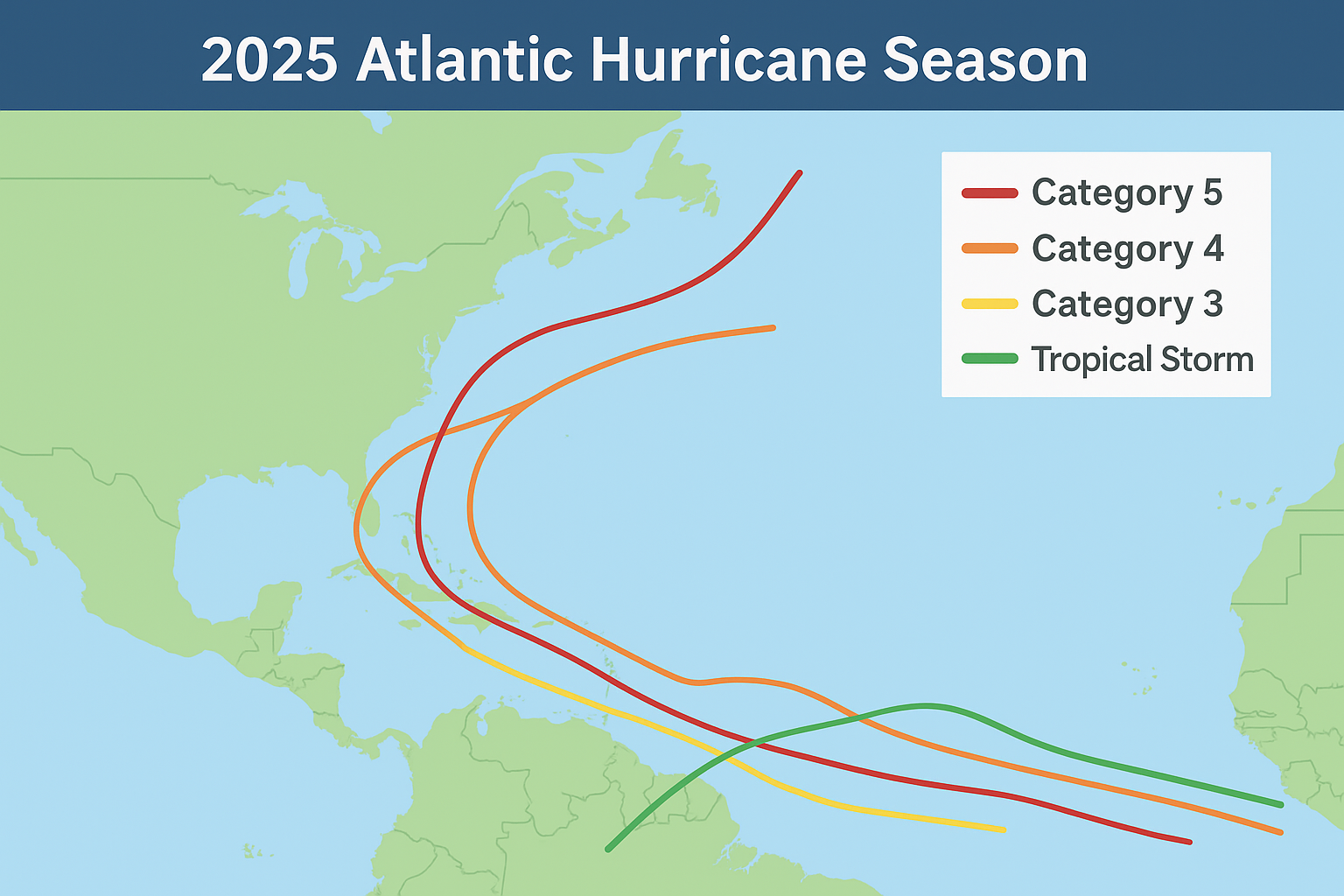Tropical storm Melissa crawls toward Jamaica and Haiti — Why experts say this could be the Caribbean’s most dangerous storm in years

Tropical Storm Melissa
A dangerous weather system is brewing in the Caribbean as Tropical Storm Melissa continues its slow, destructive crawl across the region, threatening lives and property with torrential rain, flash floods, and deadly landslides.
The storm, which formed earlier this week, is inching westward at just 3 miles per hour (5 km/h) — slower than a walking pace — while unleashing intense rainfall on Jamaica, Haiti, and the Dominican Republic. According to the US National Hurricane Center (NHC), Melissa is packing sustained winds of around 50 mph (85 km/h) but could rapidly strengthen over the coming days as it feeds on the Caribbean’s record-warm waters.
Communities on Alert
Officials across the region are urging residents in low-lying and mountainous areas to move to higher ground. In eastern Jamaica alone, forecasters expect up to 12 inches (300mm) of rainfall, enough to trigger flash floods and landslides in already saturated areas.
“Now is not the time to take chances,” warned Evan Thompson, director of Jamaica’s Meteorological Service. “We are expecting significant rainfall, and that remains the greatest threat.”
Southern Haiti and the southern Dominican Republic are also bracing for up to 10 inches of rainfall, with isolated totals exceeding a foot through the weekend. The NHC has placed Haiti under a hurricane watch and Jamaica under a tropical storm watch, warning that Melissa could become a hurricane by Friday and a major hurricane — Category 3 or higher — before the end of the week.
Why Melissa Is So Dangerous
Meteorologists say Melissa’s slow movement is what makes it particularly perilous. When a storm stalls, rain accumulates over the same areas for days — a pattern reminiscent of Hurricane Harvey (2017) in Texas and Hurricane Dorian (2019) in the Bahamas, both of which caused catastrophic flooding.
Hispaniola’s mountainous terrain further amplifies the threat. As moist air rises over the island’s peaks, it condenses into heavy rain, often triggering massive landslides and mudflows that sweep away homes and roads.
Adding to the danger, the Caribbean Sea’s heat content is unusually deep this year, meaning that even slow-moving storms like Melissa can continue strengthening instead of weakening. Scientists warn that these extreme ocean temperatures are part of a broader climate trend making tropical systems stronger, wetter, and more unpredictable.
Potential Scenarios
Two likely tracks are emerging for Melissa — and both pose serious risks.
Scenario One: If the storm continues to drift west, it could hover south of Jamaica, where warm waters could push it toward Category 4 strength by early next week. That would mean sustained winds above 130 mph, accompanied by storm surge and destructive flooding across southern Jamaica and Haiti.
Scenario Two: If upper-level winds pull the storm north sooner, it could make landfall in Haiti or the Dominican Republic this weekend. While that path could limit Melissa’s wind intensity, it would unleash extreme rainfall on densely populated, flood-prone regions.
Either way, experts say the Caribbean will face several days of flooding rains and powerful winds, with significant damage expected to infrastructure, crops, and transportation networks.
Climate Warning Signs
Meteorologists point to Melissa as another example of how warming oceans are changing storm behavior. Late-season storms like this one were once rare, but increasingly, they are becoming stronger and more frequent.
“This is what a hotter world looks like,” said a climatologist from the University of the West Indies. “We’re seeing storms form later in the year and intensify faster, fueled by heat that extends far below the ocean’s surface.”
Preparedness and Response
Authorities are advising residents to secure their homes, stock emergency supplies, and avoid flood zones. Airports and schools across parts of Jamaica and Hispaniola have already closed, and regional governments are preparing for large-scale relief efforts once conditions allow.
FAQs
1. Where is Tropical Storm Melissa right now?
As of Thursday morning, the storm was about 240 miles southeast of Kingston, Jamaica, and 335 miles south of Port-au-Prince, Haiti.
2. Will Melissa become a hurricane?
Yes. Forecast models show it could strengthen into a hurricane by Friday and possibly a major hurricane by Sunday.
3. Which areas are most at risk?
Southern Haiti, eastern and western Jamaica, and the southern Dominican Republic face the greatest risk of flash floods and landslides.
4. How does this storm compare to others?
Melissa’s slow movement and access to record-warm waters make it similar in danger to storms like Harvey (2017) and Dorian (2019), both of which caused catastrophic flooding.
5. Is climate change linked to Melissa’s intensity?
Experts say yes — warmer ocean temperatures are fueling stronger, wetter, and longer-lasting tropical storms in the Caribbean.




